Key Stage 2 Curriculum




Key Stage 2 Curriculum



Complete the introduction using the missing words below and find out more about the amazing art at our sites
Our historic houses are filled with incredible paintings created by some of the most talented artists in history. From epic battle scenes and huge wall paintings to pictures of pets and tiny, pocket-sized portraits, these come in all shapes, styles and sizes. Most of the paintings date back to a time before photography was invented , bought by people who wanted to decorate their homes with pictures of people, places, events, animals or stories. Not all the art on display was created by famous artists though. In our country houses, you can also find paintings by the people who lived there, providing a window into their lives. Like any historical object, our precious paintings need to be looked after, with people called conservators employed to keep them in good condition so they can continue to be enjoyed for years to come.

Read all about the
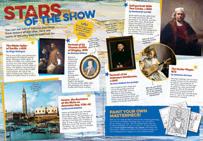
five arty objects hiding in the pages of this issue?
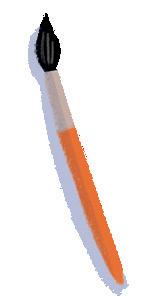


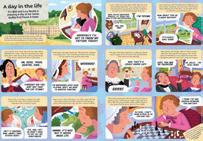

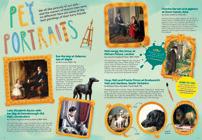
The Vegetable Seller is a beautiful painting in the collection at Audley End House in Essex. It is believed to be more than 400 years old and shows a woman surrounded by all kinds of fruit and vegetables, including cherries, nuts, peas and cucumbers. Today, it’s fun to have a go at recreating old paintings such as this in photographs, so here’s our guide to how to turn a friend or family member into the vegetable seller!
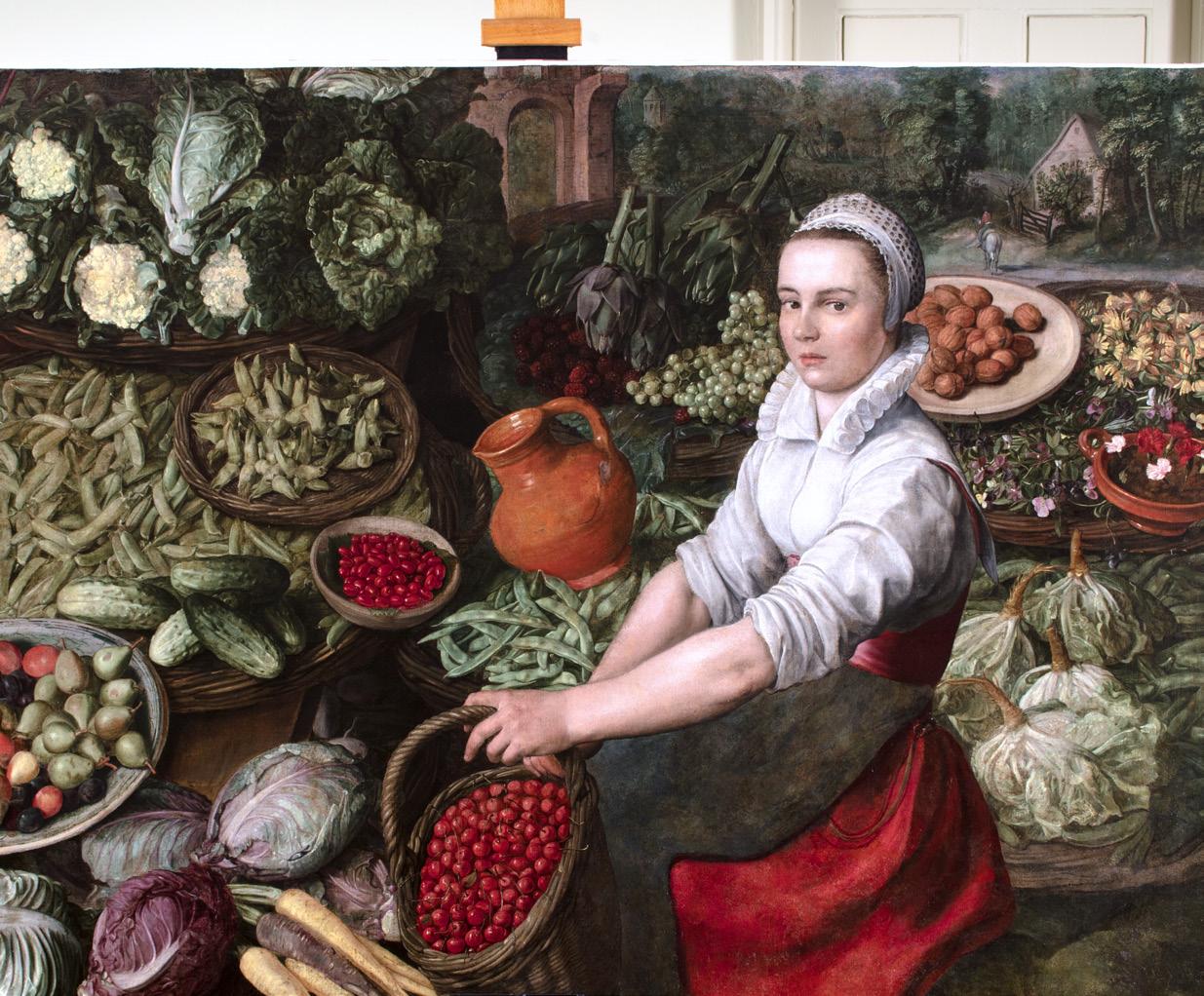
What you need:
● A costume (an apron, shirt and beanie hat)
● A table
● A selection of bowls
● Fruit and vegetables
● A cameraphone
1 Find a grown-up to be your main character. Dress them in a costume, with an apron, a shirt with rolled-up sleeves and a beanie hat.
2 Stand them in front of a worktop or table where you can surround them with bowls, boxes or other containers.
3 Now fill the bowls! You could show your favourite things to eat, or use something else, such as books, toys or games.
4Take a photo of the scene and send it to us at membersmagazine@ ourmedia.co.uk. We’ll feature the best in our next issue!
Now have a go at recreating these
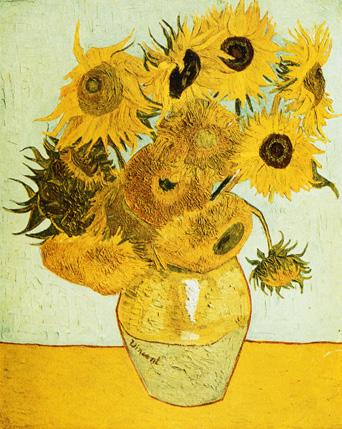



Meet our art doctors and find out how they care for our precious paintings Page 10

We reveal our biggest, smallest, oldest, newest, creepiest and silliest art Page 12


Look inside Bolsover Castle to see some legendary wall art Page 14
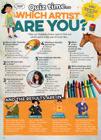
Draw them, paint them, build them or make a collage!
Let’s get creative!
Find out which great painter you’re most like with our arty quiz! Page 16
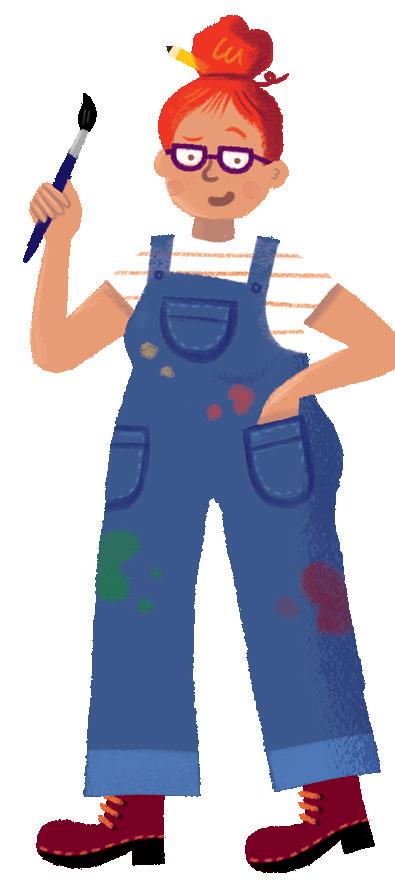

You can see lots of famous paintings from history at our sites. Here are some of the very best to look out for
The Water Seller of Seville, c.1620
by Diego Velázquez
This is one of the most well-known paintings by the Spanish painter Diego Velázquez (1599–1660). It shows a humble man selling water to a boy at a time when people didn’t have access to fresh water at home. The detail in the painting is amazing, with a tiny drip of water running down the side of the seller’s pottery jug. Today it’s on display at Apsley House in London.
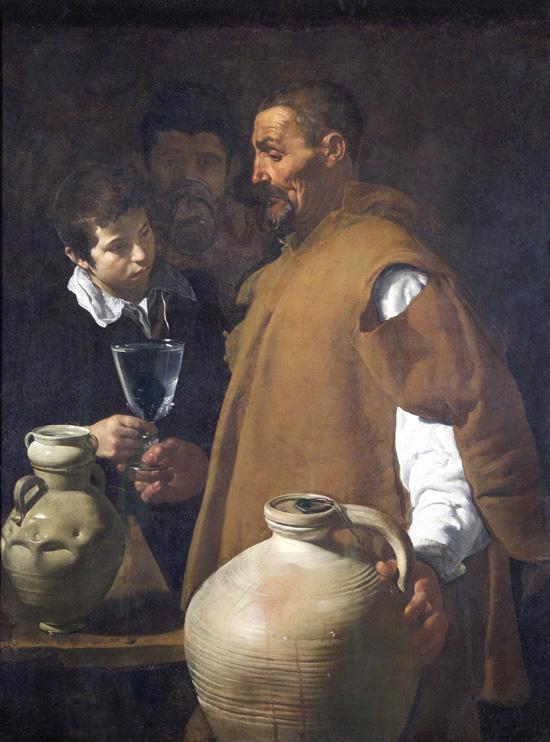

Whatdoyoucall
a man with one ear and a cold?vanVincentCough! LOL!
These tiny pocket-sized paintings were often given as gifts Look at the detail in thoseclouds!fluffy
Nicholas Hilliard
Portrait of Sir Thomas Griffin of Dingley by
Nicholas Hilliard was a talented painter of miniature portraits, which were popular before photographs exisited. This one is of English landowner Sir Thomas Griffin (1580–1615). The painting now hangs at Audley End House in Essex.

Venice, the Bucintoro at the Molo on Ascension Day, 1738–40 by
Bernardo Bellotto
Before photography was invented, paintings were the only way to record big events. This painting is of a ceremony called The Marriage of the Sea in the Republic of Venice in Italy. It was a copy of a painting by Bellotto’s uncle, the famous artist Canaletto. You can see it on display today at Audley End House.


What do this man’s clothes say about who he might have been?

by Rembrandt van Rijn
Rembrandt was the selfie king! He made more than 80 self- portraits in his lifetime, and this is one of his best. Rembrandt shows himself in his working clothes and holding the tools of his trade. The meaning of the two circles in the background is a mystery. You can admire it today at Kenwood in London.

by Hans Holbein
the younger
What do you think the circles could be?
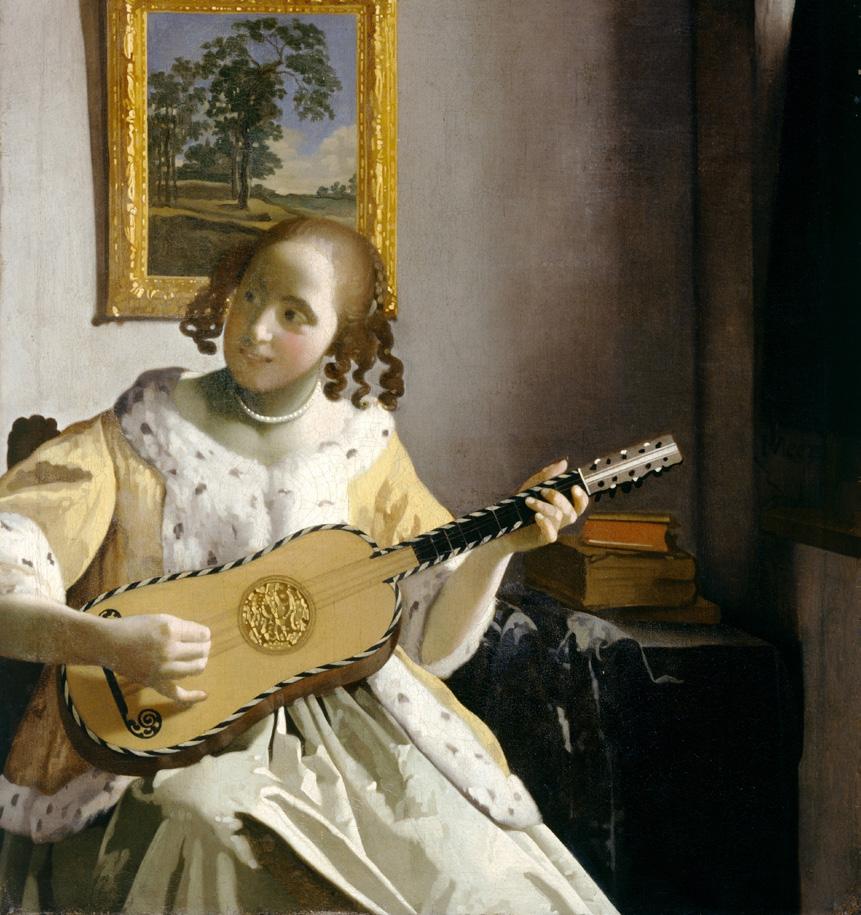
Hans Holbein (1497–1543) was one of the greatest portrait painters of the 16th century. The man in this painting is well-dressed in a fur-lined robe and embroidered shirt and holds a pair of gloves. See it at Audley End House and Gardens.
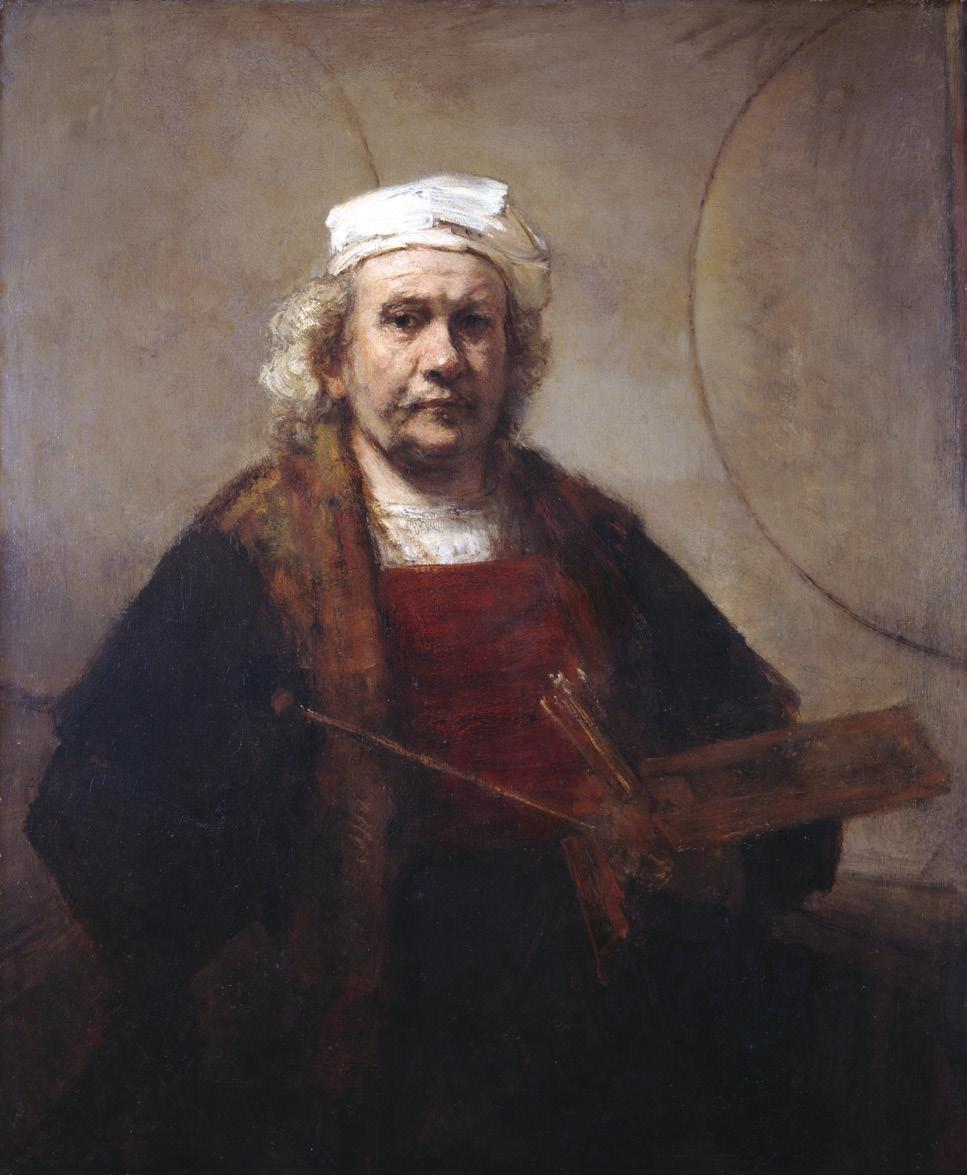
The Guitar Player, 1672
by Johannes Vermeer
Who do you think the girl is looking at? Is she pleased or annoyed by the distraction?
Paint your own masterpiece!
Now you’ve read all about some of the amazing paintings you can see at English Heritage sites, you can have a go at making your own. We’ve created three paint-bynumbers templates for you to colour in. To get started, go to www.english-heritage.org.uk/kids and follow the instructions. Before you know it, you’ll have a gallery of mini masterpieces to display on your bedroom wall!
Johannes Vermeer was a Dutch painter known for his attention to detail in his paintings. In The Guitar Player he uses light to guide our eyes around the painting. One of the darkest areas is the young woman’s face because she’s turned away from us. See it for yourself at Kenwood in London.
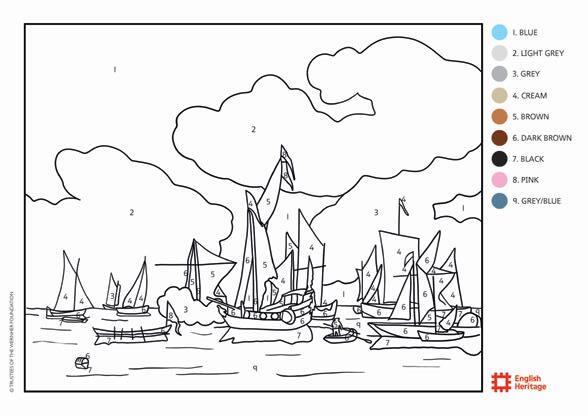
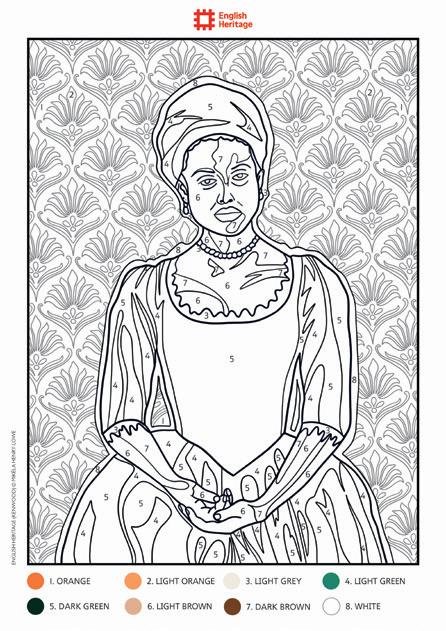

It’s 1840 and Lucy Neville is enjoying a day at her home, Audley End House in Essex

Lucy lives in an amazing country house with her family. She starts every morning by writing a diary of what she did yesterday and a wish list for today.
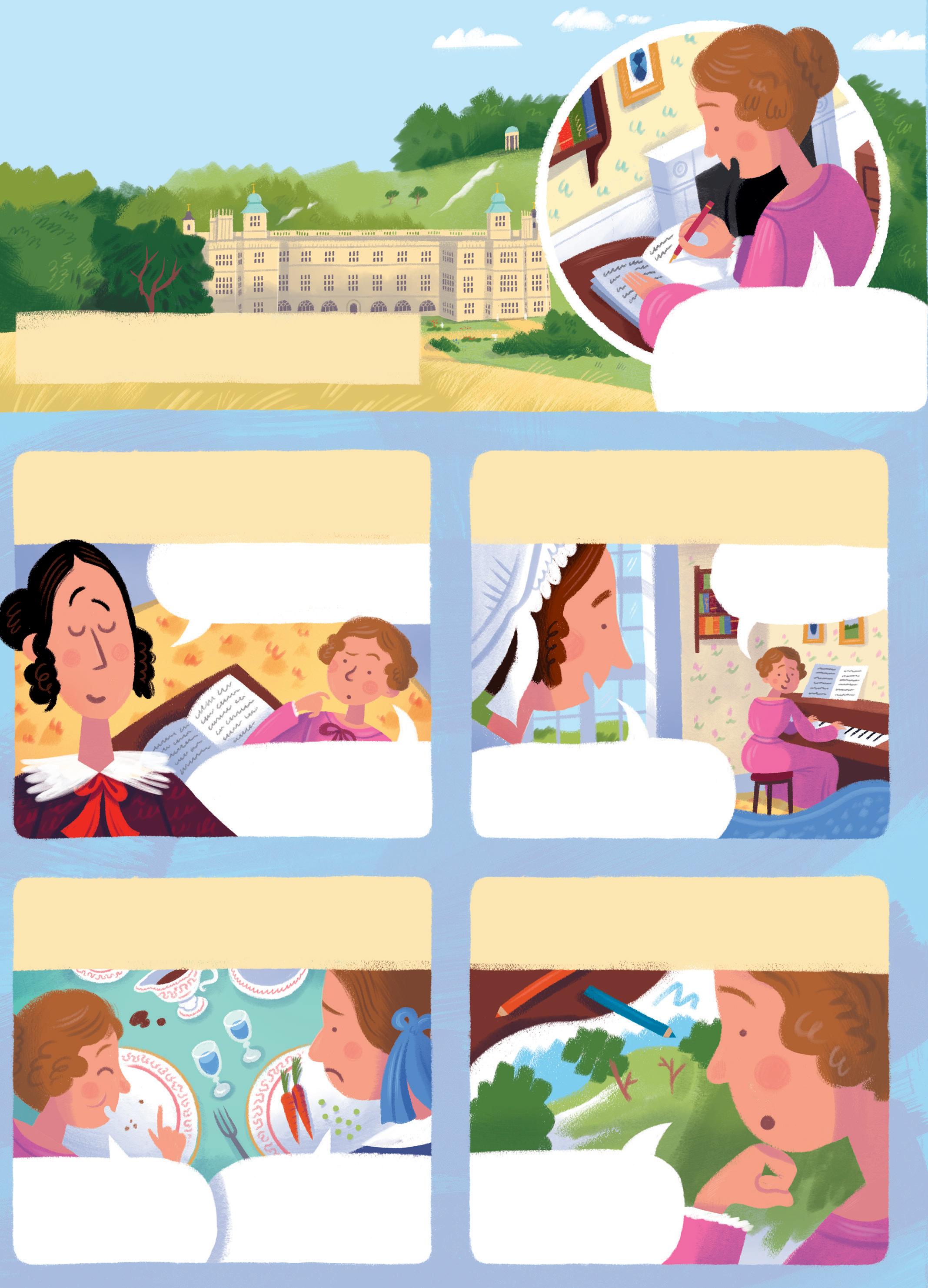
Lucy spends most of her day with her older sisters Mirabel and Louisa. They love spending time with each other, even during their morning schoolwork. Their lessons today are French and history.
Un, deux, trois, quatre, cinq…
Hopefully I’ll get to finish my picture today!
Afterwards, the girls’ governess, Mary Dormer, watches Lucy play piano. She is practising so that she can play for her parents and grandmother later.
Pardon? Did you just say that the cat stank?
Over lunch, Lucy tries to impress her sister Louisa with some of the history that she learned in this morning’s lesson.
I’m impressed with your playing. Next, we need to master painting
Next is Lucy’s favourite lesson, art. She’s spent the last few days looking out of the window and drawing a scene of the trees and a hill, and she’s nearly finished.
Isn’t it amazing King James I once stayed here?
Yes, and I bet he didn’t have to eat all his vegetables!
Hmmm, it’s nice but it needs more life
Lucy’s sisters are a few years older than her and are wonderful painters. Lucy is good but she is only allowed to use pencils until she is talented enough to try the beautiful paint they use.
Once you’ve mastered pencils, I’ll teach you how to use watercolour s
Yes, you are!
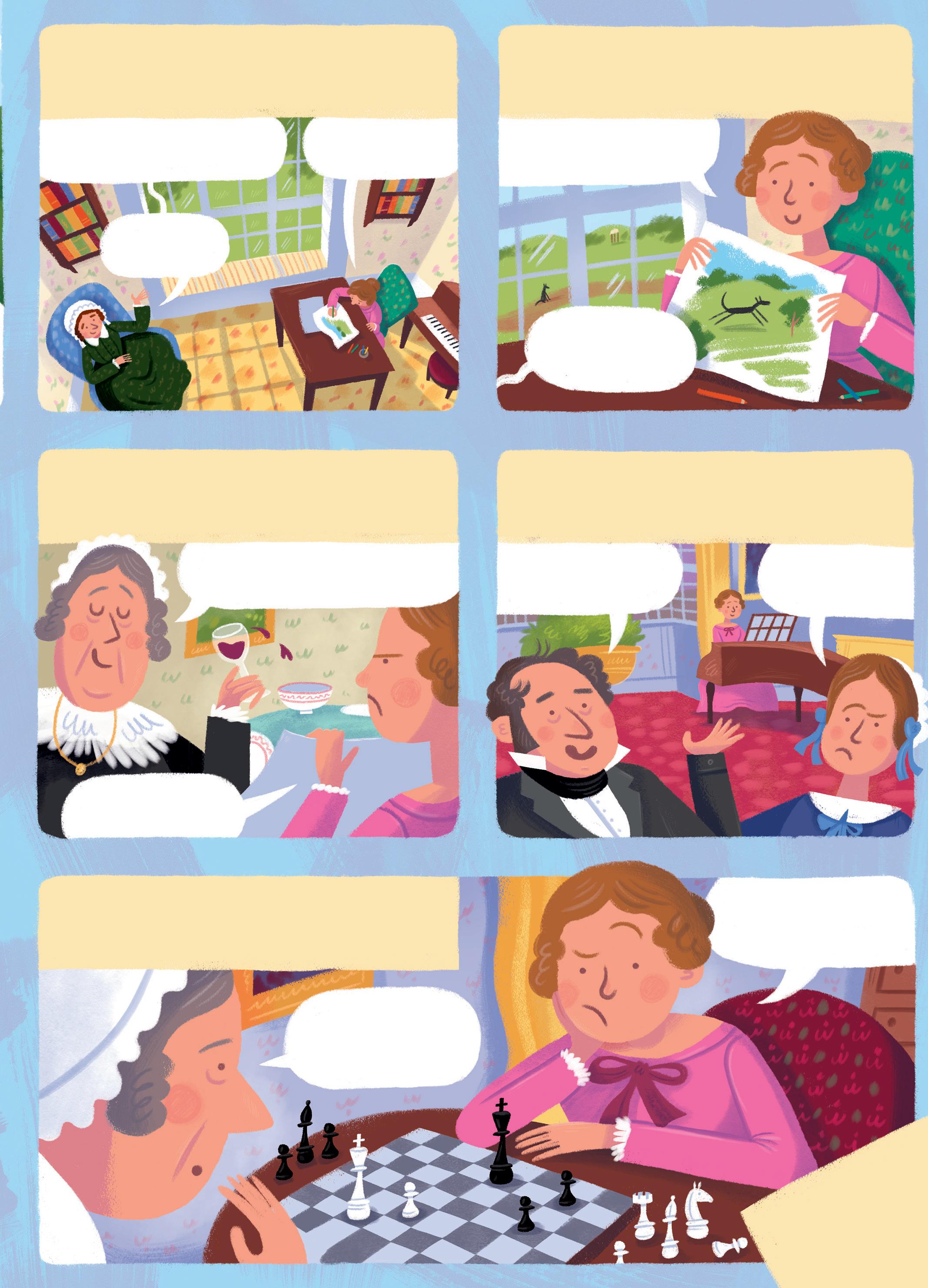
I’m trying
The girls meet their parents for a delicious dinner. Lucy is happy to be sat next to her grandmother and shows her the drawing.
Ooh, that’s a lovely horse Lucy
After being impressed with her painting and piano playing, Lucy’s father lets her play a quick game of chess with her grandmother. Sadly, neither player is very good and the game goes on for a while.
Oh
dear,
I don’t think either of us can win
this
Lucy continues with her drawing by looking out of the window. Suddenly, she sees one of the family’s dogs walking across the lawn, so she adds him to her picture as a finishing touch.
How about this as a woof sketch?!
It’s lovely, well done!
After dinner, all the girls take it in turns to play piano for their parents and guests. Her sisters play wonderfully but Lucy steals the show with a gorgeous piece of music and Louisa isn’t happy.
Lucy, you are so talented!
Er, hello… I’m still here!
I think I’ve had enough drawing for one day!
We all like pictures of our pets –and the owners of historic sites were no different! Here are some of the best paintings of their furry friends

Lady Elizabeth Bacon with her dog at Gainsborough Old Hall, Lincolnshire
by Charles Augustus Henry Lutyens (1829–1915)
This portrait shows Lady Elizabeth Bacon sitting with her dog, probably a Jack Russell Terrier, with a book in her hand. We don’t know the name of the dog but can see from the way the dog and Elizabeth are looking at each other that they have a strong bond.
by John Lucas (1807–74)
Prince Albert’s favourite pet was his greyhound, Eos. This painting was a present from Queen Victoria and includes their eldest child and of course Eos. Eos travelled with Prince Albert when he moved from Germany and was a faithful companion, appearing in many paintings. The greyhound also appears as a bronze sculpture, which you can still find on the terrace at Osborne.

by Victor Evstaf’ev (1916–89)
Charles Darwin kept pigeons at his home, Down House. Breeding and showing fancy pigeons were very popular pastimes in Victorian England. But Darwin used his pigeons to research the evolution of birds and understand differences between species, and he grew to love the pigeons he studied.
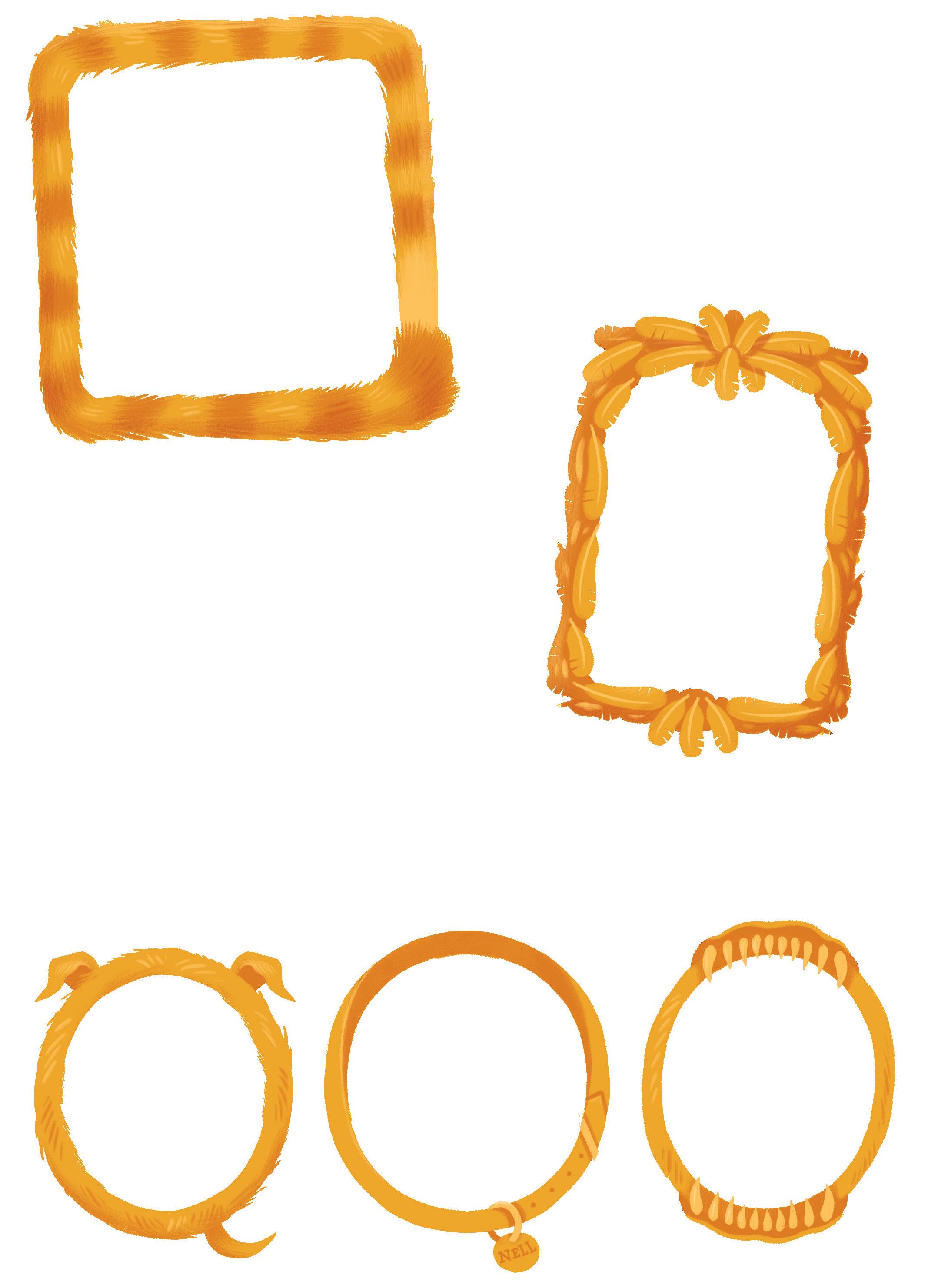
by Leonard Campbell Taylor (1874–1969)
This painting shows Stephen and Virginia Courtauld’s pet lemur, Mah-Jongg, in the music room of their home at Grosvenor Square. When they moved to Eltham Palace, they created large heated living quarters for him with a bamboo ladder so that he could climb between floors!
by William Henry Hamilton Trood (1848–99)
Brodsworth Hall’s owners, Peter and Elizabeth Thellusson, loved their pets. The family commemorated them in paintings, photographs and a special pets’ cemetery in the gardens, which contains the graves of 22 dogs and a parrot called Polly! The paintings below still hang at Brodsworth today, along with other paintings of family dogs.
On call with the English Heritage art doctors as they rescue a work

Rachel Turnbull , senior collections conservator
This painting by Jacob Huysmans was made for Lord Thomas Crew in 1681. The name explains exactly who is in the painting: Portrait of Jemima, Armine and Elizabeth Crew, Daughters of Thomas Second Lord Crew of Steine. Jemima married Henry Grey, 1st Duke of Kent, who built Wrest Park. The picture came to the studio for conservation because it was damaged.
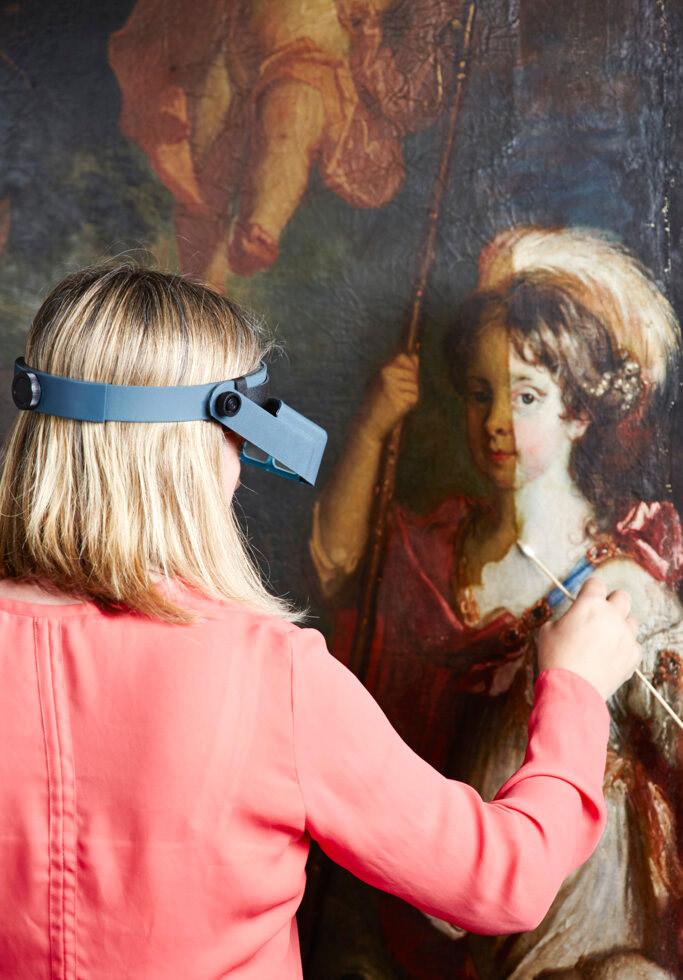
How we use science to understand how paintings were made

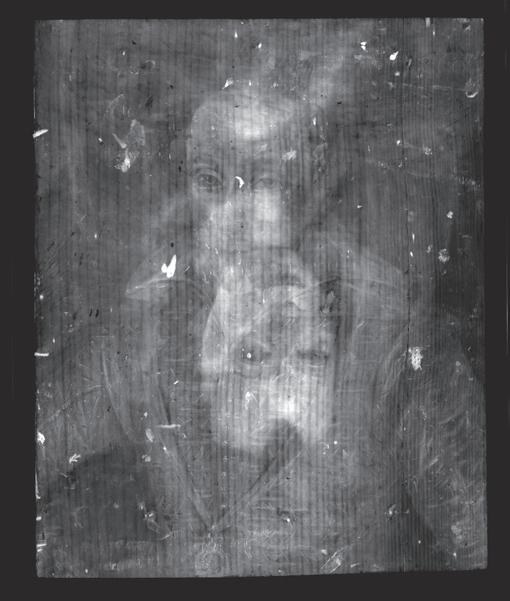
X-rays look through a painting to the lower layers. It’s a bit like looking at a bone through your skin if you’ve ever been unfortunate enough to break one! In this painting from Audley End, we discovered that the artist had painted over another painting. Turn the magazine upside-down – can you see the first painting?



3
1
Before treatment the painting was in poor condition with torn canvas and a dirty varnish on it, so you couldn’t see the bright colours. The old varnish was removed with special chemicals and tiny cotton wool swabs. This took around 150 hours!
During cleaning we found out that the artist had changed his mind about what he was painting. There is a hidden flying cherub in the centre of the painting, which we hadn’t seen before.
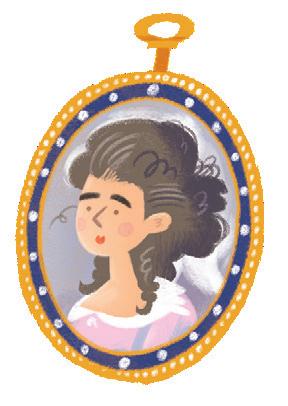
2
Cleaning the painting revealed white highlights of thickly textured oil paint. The canvas was torn at the edge, so we used small irons to attach a new piece of fabric, called a strip lining, at the back of the painting.
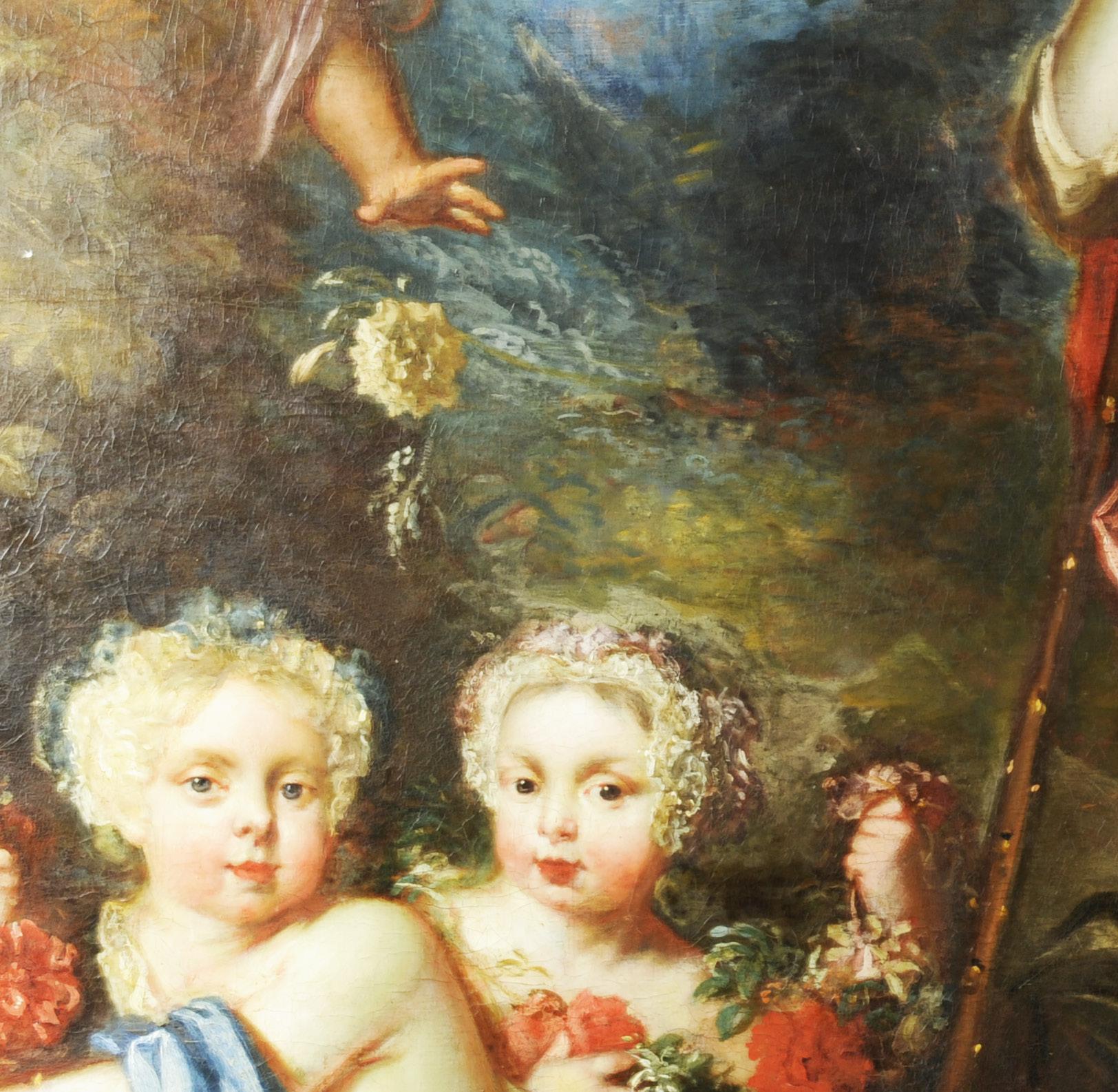
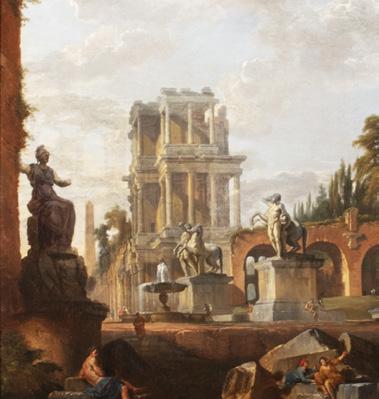
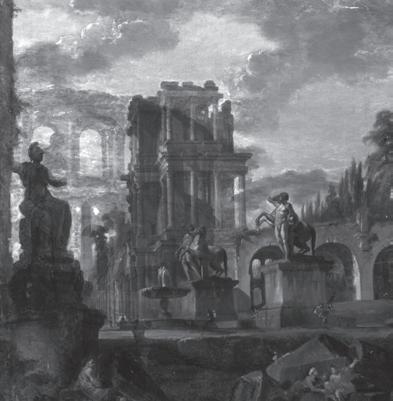
Infrared light helps see beneath the drawing to the layers of paint underneath. In this painting from Marble Hill we discovered the artist first painted the colosseum, a big building in ancient Rome where gladiators fought, but then decided to paint it out. Can you spot the ghostly shape of the building?
theWhywaspainting arrested?Because it framed!was LOL!
4
Can you spot the hidden cherub’s pointing finger in the background above the heads of the two sisters? You can see the painting for yourself in the dining room at Wrest Park.
Some things appear fluorescent in ultraviolet light (UV). Artists used varnish on their paintings, which looks greeny-blue in UV. This image shows a painting with half the varnish removed. The restored painting will go back on display at Kenwood this winter.




From the biggest to the silliest, these are the amazing paintings to look out for at English Heritage sites
THE BATTLE OF HASTINGS BY
FRANCISWILKIN,WILLIAM 1820
This painting is nearly 10m wide – which is about the length of a doubledecker bus!
This huge painting at Battle Abbey is 9.6m wide and 5.2m tall. The man who asked for it to be painted, Godfrey Webster 5th Baronet, modelled for William the Conqueror on the white horse. Godfrey was the first person to open Battle Abbey to the public.
What did the artist draw before he went to bed? The curtains! LOL!
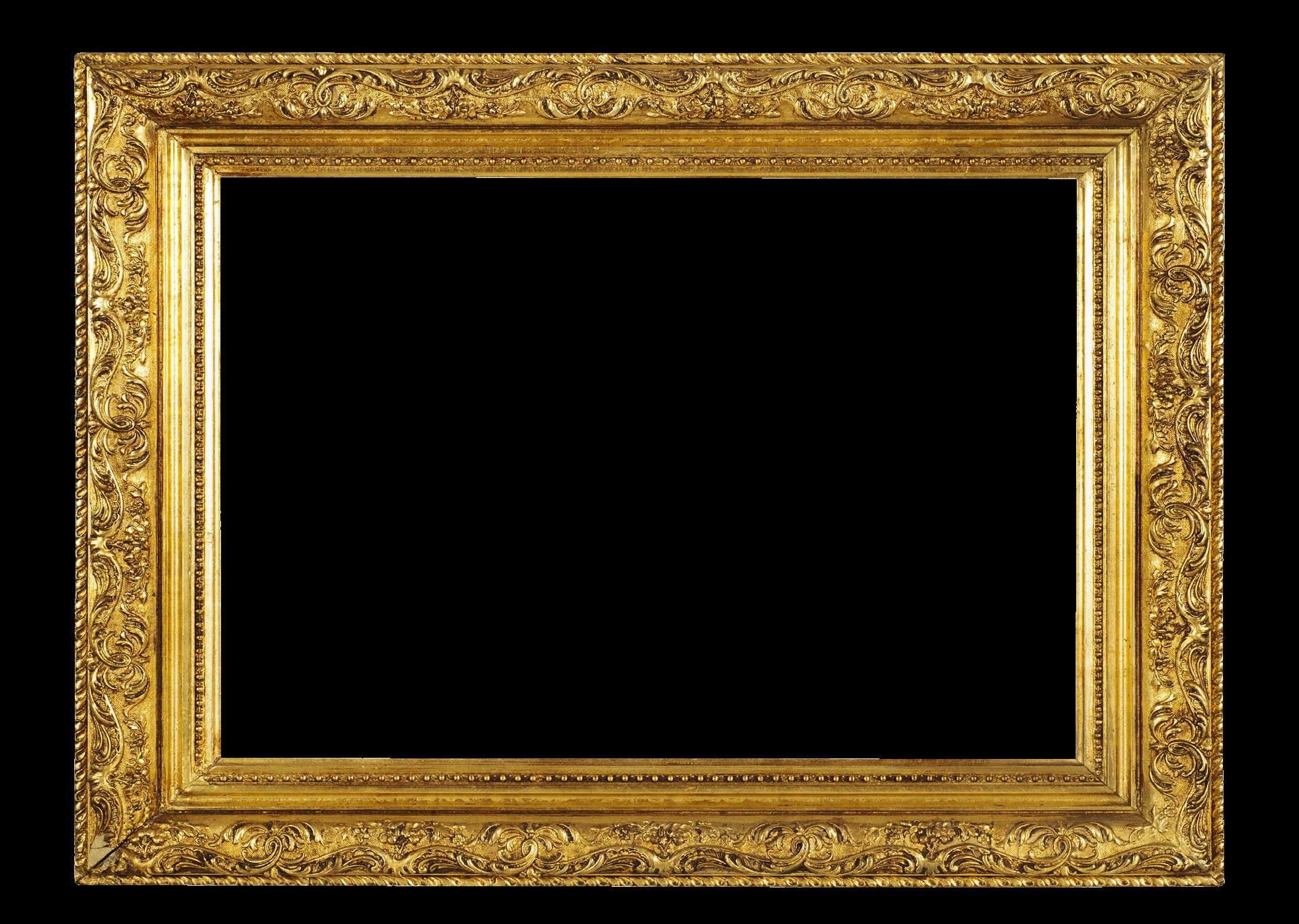

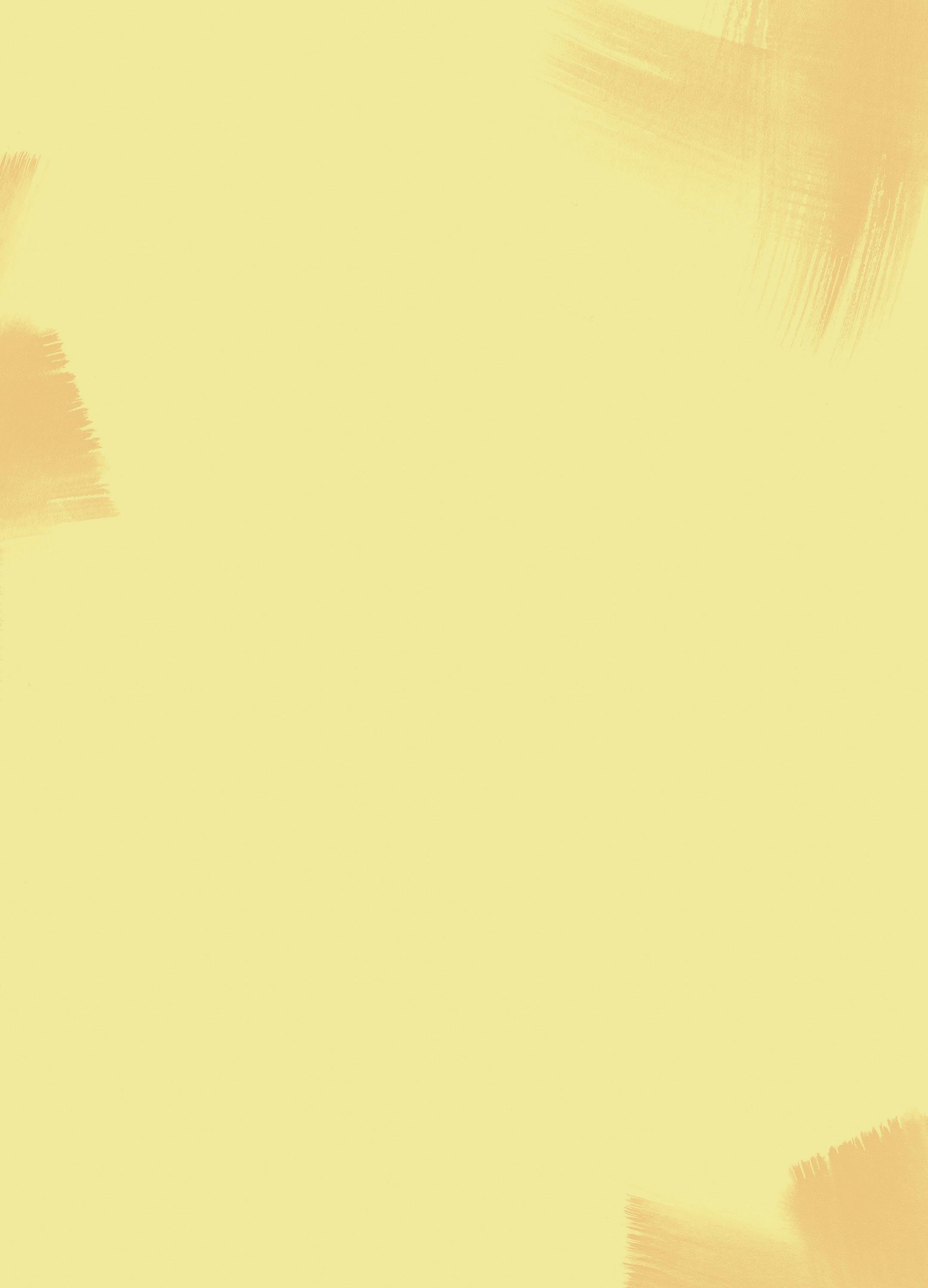
PORTRAIT MINIATURE OF KING GEORGE III SET INTO A RING, c.1760–1820
This tiny portrait, which is at Kenwood in London, is less than 2cm tall. It shows King George III, who reigned from 1760 to 1820. Setting portraits into jewellery was a popular way to show loyalty to the king.
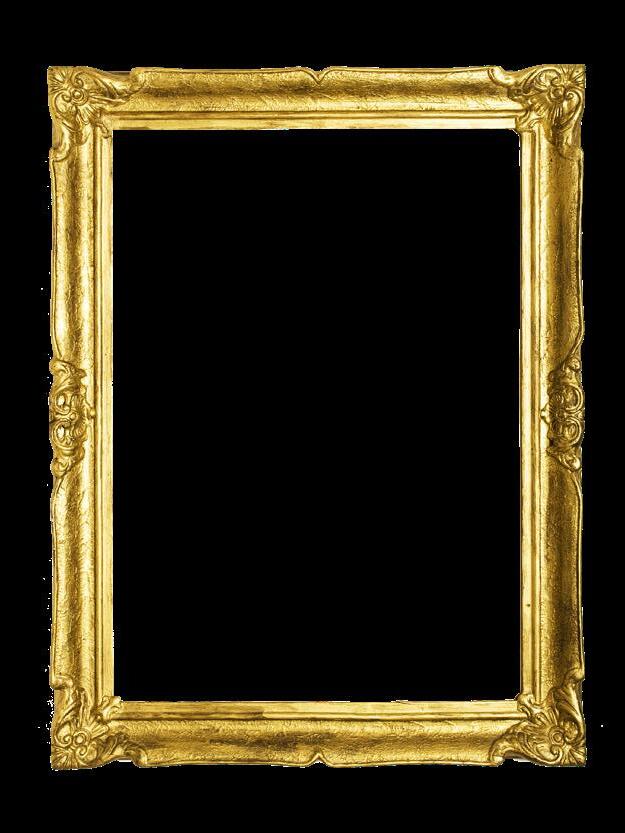
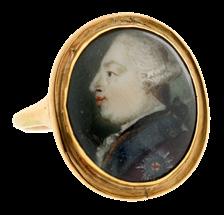
Actual size!
PORTRAIT OF DIDO BELLE BY MIKÉLA HENRY-LOWE, 2021
This brilliant portrait of Dido Belle (who lived from around 1761 to 1804) was commissioned by English Heritage in 2021 and was painted by Jamaican artist Mikéla Henry-Lowe. You can see it at Kenwood, where Dido lived.
TWO GIRLS DRESSING A KITTEN BY CANDLELIGHT BY JOSEPH WRIGHT OF DERBY, c.1768–70
In this unusual painting (also at Kenwood), two girls are dressing up a kitten in their doll’s clothes. He doesn’t look very happy about it, does he? The artist is famous for his use of light and dark.
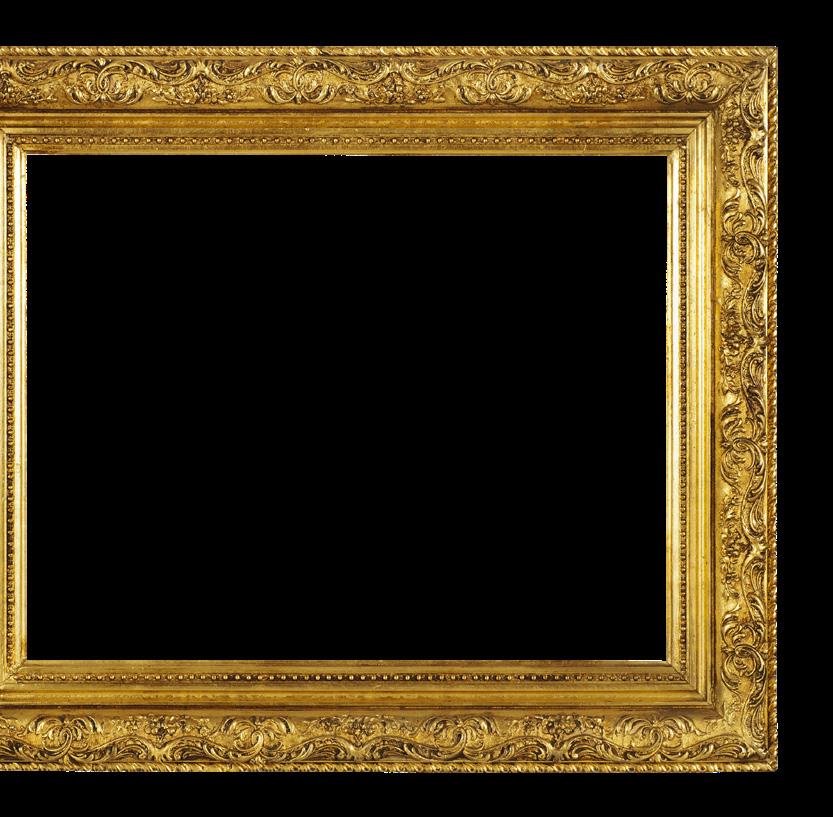


Pigments are colourful powdery substances that are mixed with oil to make a paint. You won’t believe what some of them were made from in the past!

Mummy brown
Mummy brown was made from actual mummies dug up from ancient Egyptian tombs! The ground-up body-bits made a rich translucent paint.


THE EGG DANCE BY JAN STEEN, 1670s
This painting at Apsley House depicts a lively Dutch party. In the centre, a group of peasants are playing a traditional Easter game, known as the ‘egg dance’. If you look closely you can see that the dancer wearing a red skirt is about to step on an egg!

Carmine is a bright crimson made from crushed cochineal beetles found on cactus leaves in Mexico and South America. It’s still used today to colour M&Ms!
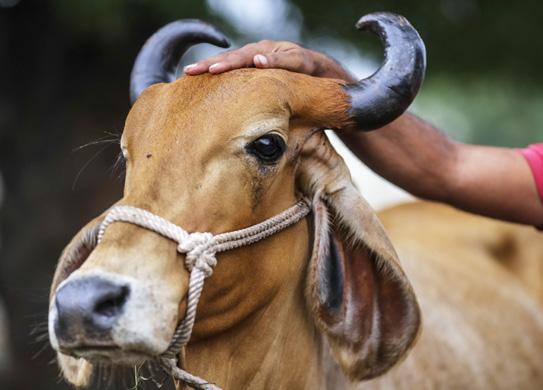
Indian yellow
Indian yellow was made from the wee of cows fed on mango leaves in India. Sadly, it made them very unhealthy! It produced a really bright yellow.

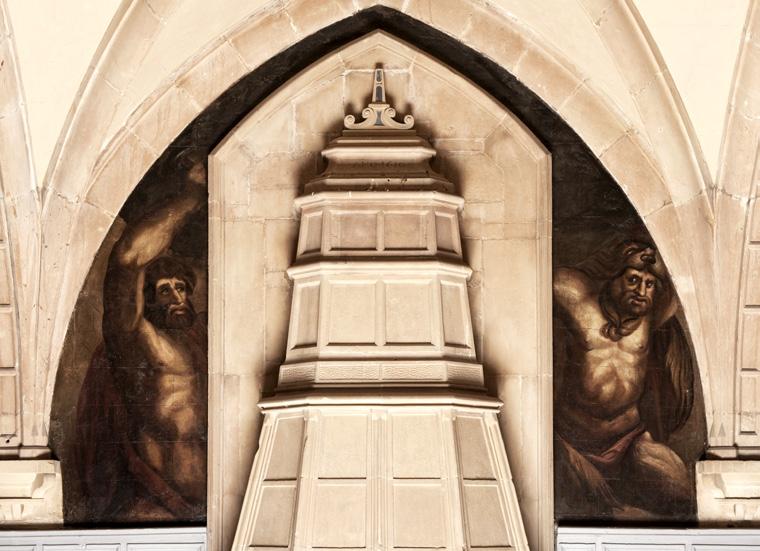
inside…
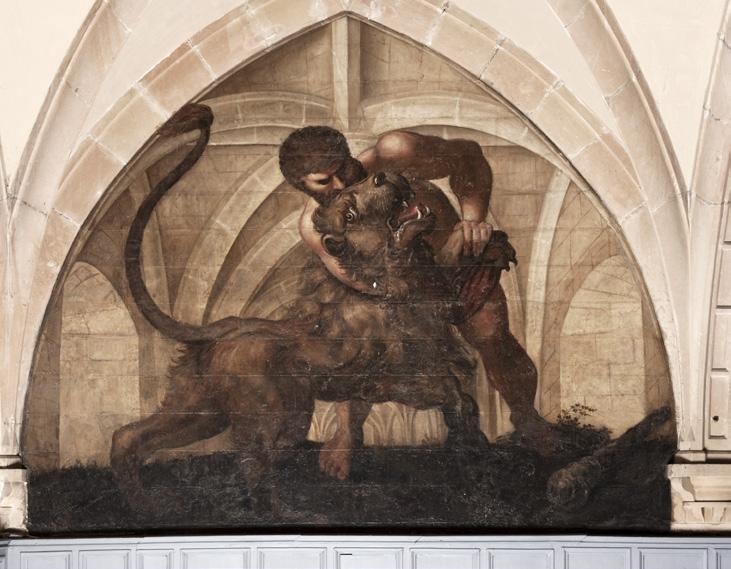

Discover myths and legends on the painted walls of the castle’s hall
1
Covering the walls
Many of the rooms in the Little Castle are decorated with colourful wall paintings showing images from the Bible and myths and legends. Each room has a different set of paintings.
2 The Labours of Hercules
In mythology, Hercules had to perform 12 labours (difficult tasks). One of the tasks was to steal the man-eating, fire-breathing horses belonging to Diomedes, King of Thrace.
3
Cretan bull
For another of Hercules’ tasks, he was sent to the Greek island of Crete, where an angry bull was destroying buildings. Hercules wrestled the bull and took him away.
4 Hidden portraits Portraits of Hercules (right) and Vulcan, the god of fire (left), are next to the fireplace. It’s possible that these represent William Cavendish, the owner of Bolsover, and his brother Charles.
5
What did the painterdowhen hegotcold? anotherHeputoncoat! LOL!
Nemean lion
In a town called Nemea, a lion threatened the people. This was Hercules’ first labour. Hercules had to use strength to overcome the lion. He wore the lion’s skin afterwards as a trophy.
6
The Little Castle Plays, feasts and music filled the Little Castle when the Cavendish family came to stay. Friends were invited and, on one occasion, King Charles I and Queen Henrietta Maria, came to visit!


Last issue, we asked you to design your own sports medal and here are the winning entries!


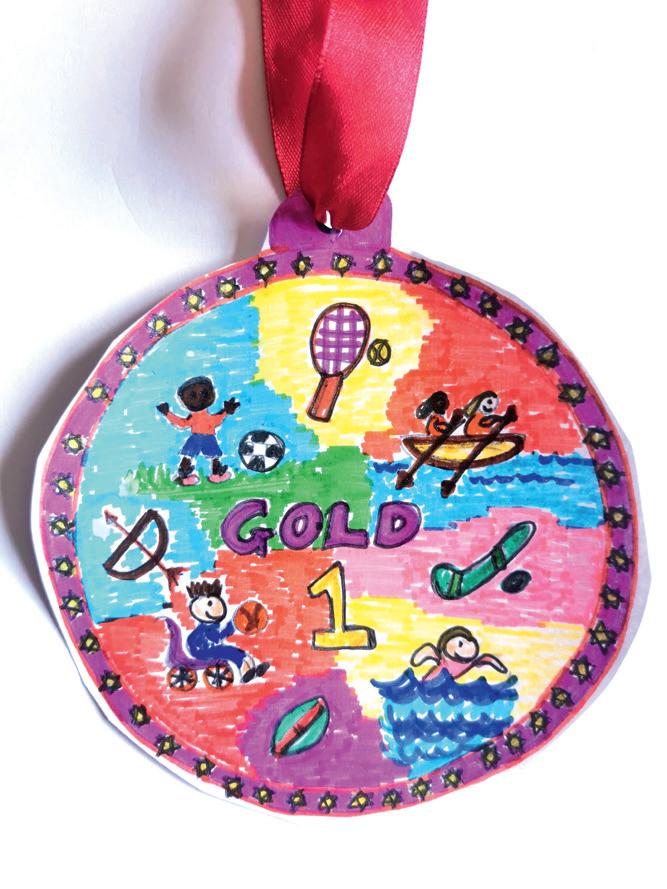

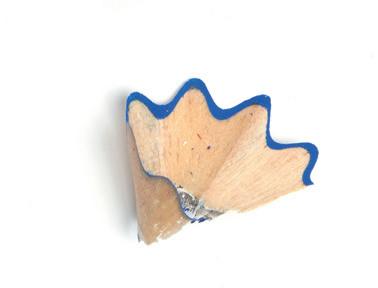

Now you’ve read all about the incredible wall paintings that can be seen at Bolsover Castle, we’d like you to create your own magificent murals. Go to our website to download a special template of a room and then decorate the walls in whatever way you’d like! Send in a photo of your amazing artwork and the best one will win a brilliant English Heritage goody bag worth £100! Go to www.english-heritage.org.uk/kids for more information and to enter. Enter our competition for your chance to win a brilliant £100 goody bag!
closing date and time for entries is midnight on 4 January 2025. For full terms and conditions, go to www.english-heritage.org.uk/kids



Whatdidtheartthiefsaytothe curator?Givemeall yourMonet!
Take our multiple-choice quiz to find out which great artist you’re most like…
1 What is your favourite thing to draw?
A Animals
B Action scenes
C I draw what I see, in my own way
D I just like blending paint, colours and shapes
2 How did you learn to draw?

4 Would you describe your art as…
A Detailed
B Exciting
C Imaginative
D Rebellious
5 How would you describe your style?
A Dedicated
B Ambitious
A I’m technical but self-taught
B I learned from teachers
C I learned from the world around me
D I just paint what I feel
3 How neat are you?
A Very precise
B I like to be neat but
C I just do want I want
D I don’t care what anyone else thinks
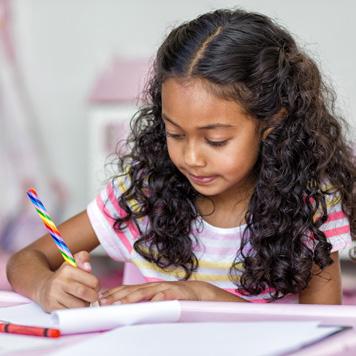
6 What inspires you?
A Reality
B Action and movement
7 Which of the following would you like to paint?
A A glossy horse
B A scene from history
C People but in my own way
D I’ll just do what I want, thanks
8 What would you do if you weren’t an artist?
A Leather maker
B Diplomat
MOSTLY As?
MOSTLY Bs?
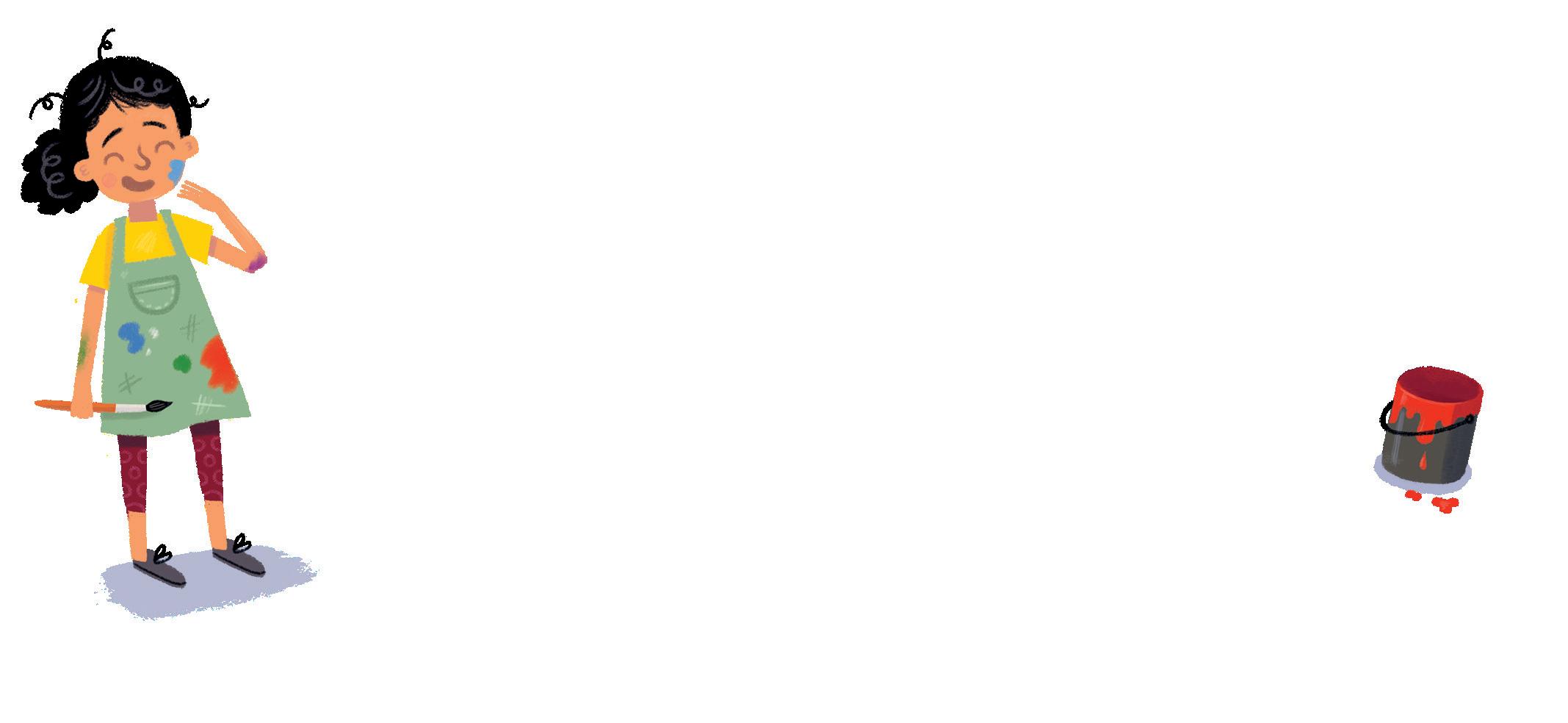

C Engraver
D Student

MOSTLY Cs?
MOSTLY Ds?

You’re George Stubbs, who is best known for his lifelike paintings of animals. Some capture intense moments of movement too.

You’re Peter Paul Rubens, who created vivid paintings of religious and mythological subjects and hunting scenes.
You’re Frida Kahlo. She painted lots of self-portraits, wearing amazing Mexican outfits, with beautiful flowers around her.
You’re Jackson Pollock, who transformed people’s idea of art with his ‘drip’ paintings, made on huge canvases laid out on the floor.